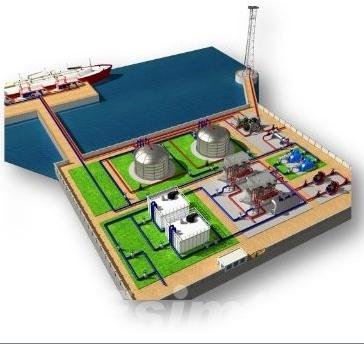The oil and gas industry operates in one of the most high-risk environments globally, where even a minor oversight can lead to catastrophic consequences. From oil spills and gas leaks to fires and explosions, the potential for crises is ever-present. Effective crisis management is not just a regulatory requirement—it’s a moral and operational imperative. Enter training simulators, a cutting-edge solution that is transforming how the industry prepares for and responds to emergencies.
The Need for Enhanced Crisis Management
Crisis management in oil and gas production involves anticipating, preventing, and responding to emergencies that could harm people, the environment, or assets. Traditional training methods, such as classroom lectures and live drills, while valuable, often fall short in preparing workers for the complexity and intensity of real-world crises. This is where training simulators step in, offering a dynamic, immersive, and risk-free environment to practice and perfect crisis response strategies.
How Training Simulators Work
Training simulators use advanced technologies like 3D modeling, virtual reality (VR), and augmented reality (AR) to replicate real-world scenarios. These simulators can mimic everything from routine operations to high-stakes emergencies, such as:
Pipeline leaks and ruptures
Offshore platform fires
Well blowouts
Gas explosions
Equipment failures
By immersing trainees in these scenarios, simulators enable them to experience the pressure and urgency of a crisis without the associated risks.
Key Benefits of Training Simulators in Crisis Management
1. Realistic, Hands-On Training
Simulators provide a lifelike environment where workers can practice emergency procedures as if they were on an actual rig or pipeline. For example, VR-based simulators can recreate the sights, sounds, and even vibrations of an offshore platform during a fire, offering an unparalleled level of realism.
2. Improved Decision-Making Under Pressure
Crisis situations demand quick, informed decisions. Simulators expose trainees to high-stress scenarios, helping them develop the ability to think critically, prioritize actions, and execute effective solutions. This is particularly valuable in complex operations like well control or emergency shutdowns.
3. Reduced Human Error
Human error is a leading cause of accidents in the oil and gas industry. Simulators allow workers to repeatedly practice emergency procedures, building muscle memory and confidence. This reduces the likelihood of mistakes during actual crises.
4. Cost-Effective and Safe
While the initial investment in simulators can be significant, they ultimately save costs by minimizing accidents, downtime, and equipment damage. Additionally, simulators eliminate the need for expensive live drills, which can be disruptive and risky.
5. Customizable Scenarios
Simulators can be tailored to reflect specific operational environments and potential risks. For instance, companies can simulate unique challenges like extreme weather conditions, equipment malfunctions, or even cyberattacks on critical infrastructure.
6. Data-Driven Insights
Modern simulators collect data on trainee performance, providing valuable insights into strengths and areas for improvement. This information can be used to refine training programs, enhance safety protocols, and ensure compliance with industry standards.
Real-World Applications
The oil and gas industry is already reaping the benefits of training simulators. For example:
Pipeline Operators use simulators like SPS (Stoner Pipeline Simulator) to train for leak detection and emergency shutdowns.
Offshore Drilling Companies employ VR-based simulators to prepare workers for well control incidents and platform emergencies.
Refineries and Processing Plants leverage AR tools to simulate equipment failures and practice emergency response procedures.
One notable example is the Xinjiang PetroChina Natural Gas Safety Experience Hall in China, which uses VR to simulate hazardous scenarios, allowing workers to experience and respond to potential dangers in a highly immersive environment.
Challenges and Future Directions
Despite their advantages, the adoption of training simulators is not without challenges. High costs, technological complexity, and the need for specialized expertise can be barriers for some companies. However, as technology advances and becomes more accessible, these challenges are likely to diminish.
Looking ahead, the integration of artificial intelligence (AI) and machine learning into simulators promises even greater capabilities. AI-powered systems could predict potential crises based on operational data and provide real-time guidance during emergencies, further enhancing crisis management in the oil and gas industry.
Conclusion
Training simulators are revolutionizing crisis management in oil and gas production. By providing realistic, immersive, and customizable training experiences, they empower workers to respond effectively to emergencies, reduce risks, and safeguard lives and the environment. As the industry continues to embrace digital transformation, the role of simulators will only grow, paving the way for safer, more efficient operations.
Investing in training simulators is not just a strategic decision—it’s a commitment to a culture of safety and preparedness that benefits everyone, from frontline workers to surrounding communities. In an industry where the stakes are incredibly high, training simulators are proving to be an indispensable tool for navigating crises and ensuring a sustainable future.









Share this page with your family and friends.